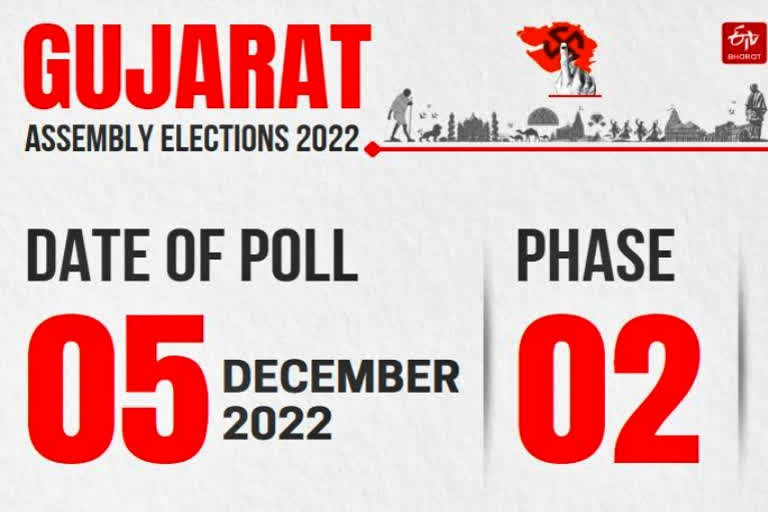New Delhi: Following a low voter turnout in the first phase of the elections in Gujarat Assembly polls on December 1, the Election Commission on Saturday issued a special appeal to voters ahead of the second phase on Monday urging them to reverse the "urban apathy" and come out in large numbers to cast their ballots.
The Election Commission said the voting percentage increased in many constituencies in Gujarat in the first-phase but the overall turnout was diminished by the "urban apathy" to voting in key districts such as Surat, Rajkot and Jamnagar. It pointed out that a similar trend was seen in urban constituencies in Himachal Pradesh where many voters shied away from polling stations last month.
The urban assembly seat of Shimla in Himachal Pradesh recorded the lowest turnout in the state at 62.53 per cent, 13 percentage points less than the state average of 75.6 per cent. Cities in Gujarat have also shown a trend of "urban apathy" to voting, pulling down the overall turnout in the first phase, the EC said.
Voter turnout in Surat, Rajkot and Jamnagar was lower than the overall 63.3 per cent in the first phase of Gujarat assembly elections, the poll panel said. Chief Election Commissioner Rajiv Kumar appealed to the voters of Gujarat to come out in large numbers during the second-phase polling on December 5 to make up for the low voting in the first phase.
Also read: Gujarat Assembly polls: Campaigning ends for second phase; voting on Dec 5
The possibility of surpassing the 2017 voting percentage now depends on their increased participation, he said, according to the Election Commission. The Gandhidham seat in Kachchh district, which has industrial establishments, recorded the lowest polling percentage of 47.8 per cent, a sharp decline of 6.34 percentage points from the 2017 turnout. The latest turnout was a new low, the EC said.
The second lowest voting was in the Karanj constituency of Surat, which was also 5.37 percentage points lower than its own low of 55.91 per cent in 2017. Major cities and urban areas of Gujarat have not only recorded a decline in voting percentage as compared to the 2017 elections, but they have also voted much less than the state average of 63.3 percent, the poll panel said.
The voting percentage in the first phase of election in 2017 was 66.79 per cent. "Had the voting percentage in these assembly constituencies been even equal to the level of their own voting percentage in 2017 election, the state average would have been more than 65 per cent," the EC underlined in a statement.
There was a visible difference in the turnouts between rural and urban constituencies. The difference is as wide as 34.85 percentage points between the rural constituency of Dediapada in Narmada district (82.71 per cent) and the urban seat of Gandhidham (47.86 pc).
Also, the average turnout in important urban areas is lower than the turnout in rural constituencies. "Within many districts, rural constituencies have voted much more than the urban constituencies. For example, in Rajkot, there is a decline (in turnout) in all the urban assembly constituencies," it said.



